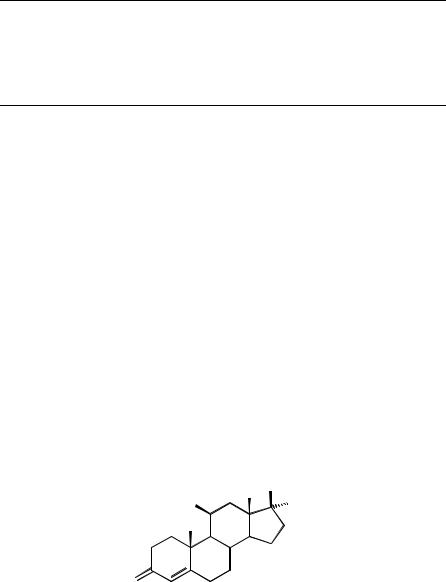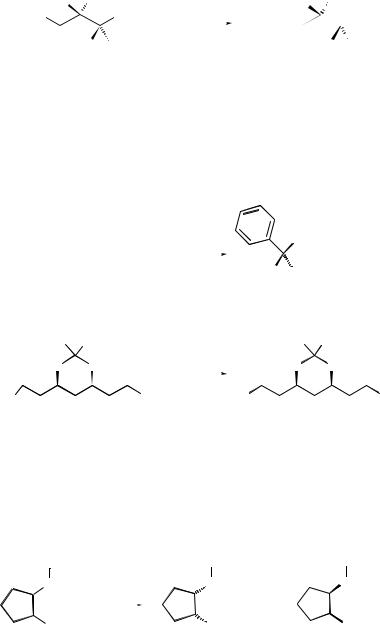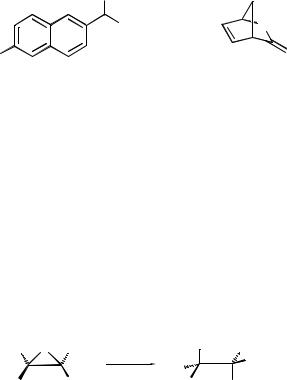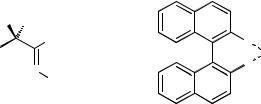

Catalysts for Fine Chemical Synthesis: Hydrolysis, Oxidation and Reduction. Volume 1 Edited by Stan M Roberts and Geraldine Poignant Copyright 2002 John Wiley & Sons, Ltd. ISBN: 0-471-98123-0
Part I Review

Catalysts for Fine Chemical Synthesis: Hydrolysis, Oxidation and Reduction. Volume 1 Edited by Stan M Roberts and Geraldine Poignant Copyright 2002 John Wiley & Sons, Ltd. ISBN: 0-471-98123-0
1The Integration of Biotransformations
into the Catalyst Portfolio
CONTENTS
1.1 |
Hydrolysis of esters, amides, nitriles and oxiranes . . . . . . . . . |
4 |
|
1.2 |
Reduction reactions . . . . . . . . . . . . . . . . . . |
9 |
|
|
1.2.1 |
Reduction of carbonyl compounds . . . . . . . . . . . . . |
10 |
|
1.2.2 |
Reduction of alkenes . . . . . . . . . . . . . . . . . . |
13 |
1.3 |
Oxidative transformations . . . . . . . . . . . . . . . . |
17 |
|
1.4 |
Carbon±carbon bond-forming reactions . . . . . . . . . . . . |
26 |
|
1.5 |
Conclusions . . . . . . . . . . . . . . . . . . . . . |
37 |
|
References . . . . . . . . . . . . . . . . . . . . . . . |
39 |
||
The science of biotransformations has been investigated since the days of Pasteur[1]. However, progress in the use of enzymes and whole cells in synthetic organic chemistry was relatively slow until the 1950s, when the use of microorganisms to modify the steroid nucleus was studied in industry and academic laboratories[2]. Thus conversions such as the transformation of 17a-acetoxy-11- deoxycortisol into cortisol (hydrocortisone) (1), using the microorganism
Me COCH2OH
HO |
OH |
Me
O
(1)
Curvularia lunata to introduce the 11b-hydroxy group directly, helped to revive interest in the application of biological catalysis to problems in synthetic organic chemistry. The momentum was continued by Charles Sih, J. Bryan Jones, George Whitesides and others, until, by the mid-1980s, biocatalysis
4 |
hydrolysis, oxidation and reduction |
was being accepted as a powerful method, especially for the production of optically active products[3]. At this time the whole field was given another boost by Alexander Klibanov at the MIT who showed emphatically (but not for the first time) that some enzymes (especially lipases) could function in organic solvents, thus broadening the substrate range to include water-insol- uble substances[4].
For a while, in the early 1990s, the interest in the use of enzymes in organic synthesis increased at an almost exponential rate and two-volume works were needed even to summarize developments in the field[5]. Now, at the turn of the century, it is abundantly clear that the science of biotransformations has a significant role to play in the area of preparative chemistry; however, it is, by no stretch of the imagination, a panacea for the synthetic organic chemist. Nevertheless, biocatalysis is the method of choice for the preparation of some classes of optically active materials. In other cases the employment of man-made catalysts is preferred. In this review, a comparison will be made of the different methods available for the preparation of various classes of chiral compounds[6].
Obviously, in a relatively small work such as this it is not possible to be comprehensive. Preparations of bulk, achiral materials (e.g. simple oxiranes such as ethylene oxide) involving key catalytic processes will not be featured. Only a handful of representative examples of preparations of optically inactive compounds will be given, since the emphasis in the main body of this book, i.e. the experimental section, is on the preparation of chiral compounds. The focus on the preparation of compounds in single enantiomer form reflects the much increased importance of these compounds in the fine chemical industry (e.g. for pharmaceuticals, agrichemicals, fragrances, flavours and the suppliers of intermediates for these products).
The text of this short review article will be broken down into the following sections:
1.Hydrolysis of esters, amides, nitriles and oxiranes
2.Reduction reactions
3.Oxidative transformations
4.Carbon±carbon bond forming reactions.
In each of these areas the relative merits of biocatalysis versus other catalytic methodologies will be assessed. Note that the text is given an asterisk (*) when mention is made of a catalyst for a reduction or oxidation reaction that is featured in the later experimental section of this book.
1.1HYDROLYSIS OF ESTERS, AMIDES, NITRILES AND OXIRANES
The enantioselective hydrolysis of racemic esters to give optically active acids and/or alcohols (Figure 1.1) is a well established protocol using esterases or lipases. In general, esterases from microorganisms or animal sources (such as

the integration of biotransformations into catalyst |
5 |
Pseudomonas putida esterase or pig liver esterase, (ple) or proteases (e.g. subtilisin) are employed in the reactions described in equation (1), while lipases (e.g. Candida antarctica lipase) are more often used for transformations illustrated in
H2O + R*CO2Me |
|
|
Enz, H2O |
R*CO2H + MeOH |
(1) |
|
|
Enz, H2O |
|||||
H2O + R*OCOMe |
|
R*OH + MeCO2H |
(2) |
|||
|
Enz, H2O |
|||||
H2O + R1CO2R2* |
R1CO2H + R2*OH |
(3) |
||||
|
||||||
R* ˆ chiral unit; Enz ˆ esterase or lipase
Figure 1.1 Generalized scheme illustrating the hydrolysis of esters using enzymes.
equations (2) and (3). Obviously in order to obtain optically active acid and/or alcohol the reaction is not taken to completion but stopped at about the halfway stage. The enantiomer ratio E[7] indicates the selectivity of the enzyme catalysed reaction. E values > 100 indicate highly enantioselective biotransformations. Typical resolutions are illustrated in Schemes 1[8] and 2[9]. There have been
i
R1CH(Me)CO2Me R1CH(Me)CO2H + MeOH
(S )-stereoisomer E > 500
Scheme 1: Reagents and conditions: i) Ps. putida esterase H2O:
F5C6−CH(OCOMe)CN i  F5C6−CH(OH)CN+MeCO2H
F5C6−CH(OH)CN+MeCO2H
(S)-stereoisomer E > 200
Scheme 2: Reagents and conditions: i) lipase LIP, H2O, buffer pH 5±6.
models postulated for many of the popular enzymes (pig liver esterase, Candida
rugosa lipase) in order better to predict the preferred substrate in a racemic mixture[10].
The ability of hydrolases to hydrolyse esters derived from primary alcohols
in the presence of esters derived from secondary alcohols has been recognized (Scheme 3)[11].

6 |
hydrolysis, oxidation and reduction |
|
|
|||
|
C17H35CONH H |
|
|
C17H35CONH |
H |
|
|
MeOCO |
C13H27 |
i |
HO |
|
C13H27 |
|
H |
OCOMe |
|
|
H |
OCOMe |
Scheme 3: Reagents and conditions: i) Burkholderia cepacia lipase, H2O, buffer pH 7, decane.
However, the exquisite selectivity of hydrolase enzymes is, perhaps, best illustrated by their ability to produce optically active compounds from prochiral
and meso-substrates. In both these cases a theoretical yield of 100 % for optically pure material is possible (Scheme 4)[12, 13].
|
|
|
|
i |
F |
|
|
|
|
|
H5C6(F)C(CO2Et)2 |
|
|
|
|
||
|
|
|
EtO2C CO2H |
|
|
|||
|
|
|
|
|
||||
|
|
|
|
|
|
|
||
|
|
|
|
|
ca 96 % ee |
|
|
|
|
|
|
|
|
70 % yield |
|
|
|
Me |
Me |
|
Me |
Me |
||||
O |
O |
ii |
O |
O |
||||
|
|
|
|
|
|
|
|
OCOMe |
MeOCO |
|
OCOMe |
|
HO |
|
|||
|
|
|
|
|
> 96 % ee |
|||
|
|
|
|
|
98 % yield |
|||
Scheme 4: Reagents and conditions i) Porcine pancreatic lipase, H2O ii) Ps. fluorescens lipase, H2O.
No other catalysts compete favourably with the enzymes in this type of work. Similarly lipases are the catalysts of choice for the enantioselective acylation of
CO2CH2Ph |
|
|
|
CO2CH2Ph |
|
CO2CH2Ph |
|
NH |
|
|
|
NH |
|
NH |
|
|
|
i |
|
+ |
|
OH |
|
|
|
|
|
||||
|
|
|
|
|
|
||
|
|
|
|
|
|
||
OH |
|
|
|
OCOMe |
|
||
|
|
|
|
|
E > 200 |
|
|
Scheme 5: Regents and conditions: i) Ps. cepacia lipase, vinyl acetate in tert-butyl methyl ether.

the integration of biotransformations into catalyst |
7 |
a wide a variety of alcohols. This area of research has mushroomed since Klibanov's seminal studies clearly indicating that the procedure is exceedingly simple; a comprehensive review of the methodology is available[14]. A typical example of a resolution process involving enantioselective esterification using a lipase is shown in Scheme 5[15]. Furthermore, the mono-esterification of meso-
diols represents an efficient way to generate optically active compounds (Scheme 6)[16].
OH |
|
|
OH |
|
O |
O |
i |
O |
O |
OH |
|
|
OCOMe |
|
|
|
|
>99 % ee |
|
|
|
|
56 % yield |
|
Scheme 6: Reagents and conditions: i) Ps. fluorescens lipase, vinyl acetate in n-octane.
To a much smaller extent non-enzymic processes have also been used to catalyse the stereoselective acylation of alcohols. For example, a simple tripeptide has been used, in conjunction with acetic anhydride, to convert trans-2-acetylaminocyclohexanol into the (R),(R)-ester and recovered (S),(S)- alcohol[17]. In another, related, example a chiral amine, in the presence of molecular sieve and the appropriate acylating agent, has been used as a catalyst
in the conversion of cyclohexane-1(S), 2(R)-diol into 2(S)-benzoyloxy- cyclohexan-1(R)-ol[18]. Such alternative methods have not been extensively ex-
plored, though reports by Fu, Miller, Vedejs and co-workers on enantioselective esterifications, for example of 1-phenylethanol and other substrates using iso-
propyl anhydride and a chiral phosphine catalyst will undoubtedly attract more attention to this area[19].
The chemo-, regioand stereoselective hydrolysis of amides using enzymes (for example, acylases from hog kidney) has been recognized for many years. In the area of antibacterial chemotherapy, the use of an acylase from Escherichia coli to cleave the side-chain amide function of fermented penicillins to provide 6-aminopenicillanic acid en route to semi-synthetic penicillins has been taken to a very large scale (16 000 tonnes/year). The same strategy is used to prepare optically active amino acids. For instance, an acylase from the mould Aspergillus oryzae is used to hydrolyse N-acyl dl-methionine to afford the l-amino acid and unreacted N-acyl-d-amino acid. The latter compound is separated, chemically racemized and recycled. l-Methionine is produced in this way to the extent of about 150 tonnes/year[1].

8 |
hydrolysis, oxidation and reduction |
The hydrolysis of racemic non-natural amides has led to useful products and intermediates for the fine chemical industry. Thus hydrolysis of the racemic amide (2) with an acylase in Rhodococcus erythrolpolis furnished the (S)-acid
(the anti-inflammatory agent Naproxen) in 42 % yield and > 99 % enantiomeric excess[20]. Obtaining the g-lactam (ÿ)-(3) has been the subject of much research
and development effort, since the compound is a very versatile synthon for the production of carbocyclic nucleosides. An acylase from Comamonas acidovorans has been isolated, cloned and overexpressed. The acylase tolerates a 500 g/ litre input of racemic lactam, hydrolyses only the (‡)-enantiomer leaving the desired intermediate essentially optically pure (E > 400)[21].
Me |
|
CONH2 |
NH |
MeO |
O |
|
|
(2) |
(−)-(3) |
The enzyme-catalysed hydrolysis of epoxides has been reviewed[22]. Much of the early work featured liver microsomal epoxide hydrolases but the very nature and origin of these biocatalysts meant that they would always be limited to the small scale. In recent years the use of epoxide-hydrolase enzymes within organisms has become popular, with the fungus Beauvaria sulfurescens being featured regularly. For instance, incubation of styrene oxide with this organism provides (R)-1-phenylethanediol (45 % yield; 83 % ee) and recovered (R)-styrene oxide (34 % yield; 98 % ee)[23]. A particularly interesting example, shown in Scheme 7, is the stereoconvergent ring-opening of the racemic epoxide (4) which gives (R), (R)1-phenylpropane-1, 2-diol in 85 % yield and 98 % ee (one enantiomer of the
epoxide suffers attack by water adjacent to the phenyl group, the other enantiomer is attacked by water at the carbon atom bearing the methyl group)[24].
H |
O H |
OH |
H |
|
|
i |
Me |
|
|
H |
|
|
|
|
|
Ph |
Me |
Ph |
OH |
|
(±)-(4) |
|
|
Scheme 7: Reagents and conditions i) B. sulfurescens, H2O.
A major drawback in this area is that a portfolio of epoxide hydrolases is not available[25] and chemists remain reluctant to embark on processes which

the integration of biotransformations into catalyst |
9 |
involve the use of whole cells (such as B. sulfurescens). Not surprisingly, therefore, the use of a non-enzymic method for the kinetic resolution of terminal epoxides and the stereoselective opening of meso-epoxides, involving salen± cobalt complexes, has aroused interest. For example, use of the organometallic
catalyst in the presence of benzoic acid and cyclohexene epoxide afforded the hydroxyester (5) (98 % yield; 77 % ee)[26].
OCOPh |
H |
OCH2Ph |
|
|
|
OH |
HO2C |
CN |
(5) |
|
(6) |
The same disadvantage (lack of commercially available enzymes, and the consequent necessity for the employment of whole cells) dogs the otherwise extremely useful biotransformation involving the hydrolysis of nitriles to the corresponding amides (under the influence of a nitrile hydratase) or acids (by a nitrilase). The conversion takes place under very mild conditions of temperature and pH and some useful transformations have been recorded; for example the cyanocarboxylic acid (6) (a precursor of the lactone moiety of mevinic acids) is available from the corresponding prochiral dinitrile in good yield (60±70 %) and high enantiomeric excess (88±99 % ee), on a multigram scale, over a period of 24 hours using Rhodococcus sp. SP361 or Brevibacterium sp. R312[27].
In summary, the formation of optically active compounds through hydrolysis reactions is dominated by biocatalysis mainly due to the availability and ease of use of a wide variety of esterases, lipases and (to a lesser extent) acylases. Epoxide ring-opening (and related reactions) is likely to be dominated by salen±metal catalysts while enzyme-catalysed nitrile hydrolysis seems destined to remain under-exploited until nitrilases or nitrile hydratases become commercially available.
1.2REDUCTION REACTIONS
The balance between biocatalytic and other, organometallic-based, methodology is heavily biased in favour of the latter section when considering reduction reactions of importance in synthetic organic chemistry. Two areas will be described to illustrate the point, namely the reduction of carbonyl groups and the reduction of alkenes, not least since these points of focus complement experimental work featured later in the book.

10 |
hydrolysis, oxidation and reduction |
1.2.1REDUCTION OF CARBONYL COMPOUNDS
It is well known that bakers' yeast is capable of reducing a wide range of ketones to optically active secondary alcohols. A recent example involves the preparation of the (R)-alcohol (7) (97 % ee) (a key intermediate to (ÿ)-norephe- drine) from the corresponding ketone in 79 % yield[28]. Other less well-known organisms are capable of performing similar tasks; for instance, reduction of 5-
oxohexanoic acid with Yamadazyma farinosa furnishes (R)-5-hydroxyhexanoic acid in 98 % yield and 97 % ee[29].
HO H |
|
|
Me |
(Ph)2 |
|
Ph |
P |
|
RuCl2 |
||
|
||
N |
P |
|
(Ph)2 |
||
OMe |
|
|
(7) |
(8) |
However, the use of the whole cells of the microorganisms can lead to some difficulties. For instance, an aqueous solvent system is generally employed[30], certainly when the cells need to be in an active state and often when the cells are `resting'[31]. The solubility of the substrate in the aqueous system can be problematic, as can the related transport of the starting material in to, and out from, the cytosol. At the end of the reaction, harvesting and disposal of the mycelial mass may be disconcerting, especially when considering large scale work. If a biocatalyst other than a readily available organism (such as bakers' yeast) is necessary then access to sterile equipment including fermenters is required, often considered a drawback for a person working in a conventional chemical laboratory. Thus, despite the various methods for improvement of particular protocols (including the immobilization of whole cell biocatalysts in alginate beads*)[32], whole-cell reduction reactions of carbonyl compounds remain, almost exclusively, in the small scale research arena.
It is possible to use isolated, partially purified enzymes (dehydrogenases) for the reduction of ketones to optically active secondary alcohols. However, a different set of complications arises. The new C±H bond is formed by delivery of the hydrogen atom from an enzyme cofactor, nicotinamide adenine dinucleotide (phosphate) NAD(P) in its reduced form. The cofactor is too expensive to be used in a stoichiometric quantity and must be recycled in situ. Recycling methods are relatively simple, using a sacrificial alcohol, or a second enzyme (formate dehydrogenase is popular) but the real and apparent complexity of the ensuing process (Scheme 8)[33] provides too much of a disincentive to investigation by non-experts.

the integration of biotransformations into catalyst |
11 |
i
PhCOMe  (R) PhCH(OH)Me
(R) PhCH(OH)Me
NADPH+H+ NADP+
HCO2H  CO2 ii
CO2 ii
Scheme 8: Reagents and conditions i) dehydrogenase from Lactobacillus sp. ii) NADPHdependent formate dehydrogenase.
Thus the methods of choice for the reduction of simple carbonyl compounds reside in the use of hydrogen and organometallic reagents*. Originally, reduction reactions using organorhodium complexes gained popularity. Thus hydrogen-
ation of acetophenone in the presence of rhodium (S),(S)-2,4-bis(diphenylpho- sphinyl)pentane [(S,S)-BDPP or Skewphos] gave (S)-1-phenylethanol[34].
However, the employment of chiral ruthenium diphosphine±diamine mixedligand complexes has displaced much of the original experimentation to become the methodology of choice[35]. Such catalyst systems are prepared (sometimes in situ) by mixing a complex of BiNAP±RuCl2 (8) with a chiral amine such as 1,2- diphenylethylenediamine (DPEN). In the presence of a base as co-catalyst such systems can achieve the reduction of a wide variety of alkyl arylketones under 1±10 atmospheres of hydrogen, affording the corresponding secondary alcohols
in high enantiomeric excess[36]. A similar hydrogenation of tetralone using an iridium complex gave the (R)-alcohol (9) in 88 % yield and 95 % ee[37].
As an alternative to the use of hydrogen gas, asymmetric ruthenium-catalysed hydrogen transfer reactions have been explored with significant success*[38].
The reduction of dialkylketones and alkylaryl ketones is also conveniently accomplished using chiral oxazaborolidines, a methodology which emerged from relative obscurity in the late 1980s. The type of borane complex (based on (S)-diphenyl prolinol)[39] responsible for the reductions is depicted below (10). Reduction of acetophenone with this complex gives (R)-1-phenylethanol in 90±95 % yield (95±99 % ee)*[40]. Whilst previously used modified hydrides such as BiNAL±H (11), which were used in stoichiometric quantities, are generally unsatisfactory for the reduction of dialkylketones, oxazaborolidines
H OH |
Ph |
Ph |
|
|
|
|
|
|
|
||
|
|
|
|
O |
OEt |
|
|
|
O |
O |
Al |
|
N |
|
H |
||
|
|
B |
|||
|
|
|
|
||
|
H3B |
Me |
|
|
|
|
|
|
|
||
(9) |
(10) |
(11) |
